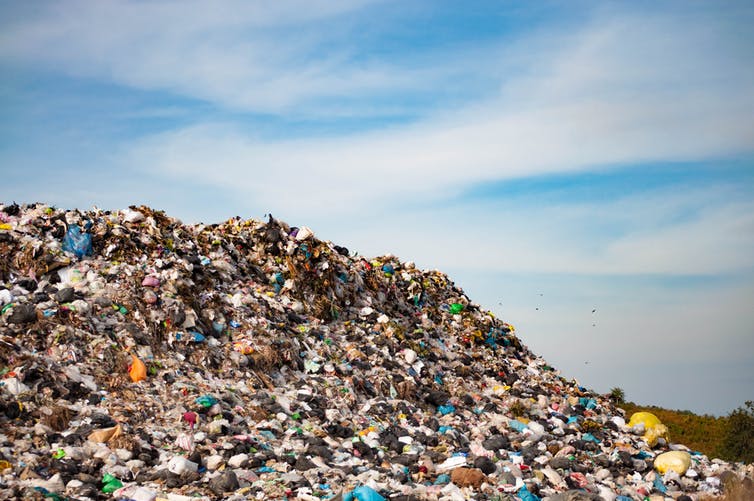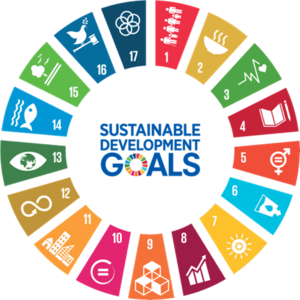Pollution, Classism, and Racism
Pollution, Classism, and Racism. Environmental Justice
In 2020 IDEAS FOR US did an interview with five panelists, Bryan Parras, Yudith Azareth, Taylor Morton, Catherine Flowers, and Kevin J Patel, who were from Zero Hour which is a youth climate activism organization. The organization believes in fighting for the right to thrive in a clean and safe environment. They believe that all communities should have good quality of air, water, and land. They are striving to hold public officials and other adults accountable for the destruction of the environment and for the furthering of climate change.
Many of the environmental issues facing us today are products of historical oppression due to capitalism and colonialism. As a result, the groups who have been harmed by these systems such as African Americans and Indigenous peoples, which are the most affected by the outcomes of these structures. In fact, many of the polluted areas in certain countries including the U.S are historically places where many minorities live. Oftentimes the government chooses to ignore environmental ramifications since those minority communities may endure the full force of those consequences.
Other communities before the official Environmental Justice movement had done their part to alert the public and advocate for policy changes (1). For example in the early 1960s Cesar Chavez along with other Latino farm workers pushed for labor rights including protection from the harmful pesticides they had to handle. However the movement that really brought environmental justice into the mainstream was one in Warren County in 1983 when large protests began to make the news(1). Today the environmental movement has multiplied. However the majority mainstream environmentalists are non-Hispanic whites which causes problems since they cannot properly represent issues related to minority groups and the environment. This is where organizations such as Zero Hour and WE ACT come in.
WE ACT for Environmental Justice
WE ACTfor Environmental Justice (WE ACT) is an organization that began in 1988 when three community leaders saw the environmental racism within their West Harlem community and fought for policy change in tandem with the rest of the people in their community. In 1991, members of WE ACT attended the First People of Color Environmental Leadership Summit in Washington, D.C where the principles of environmental justice were established. Their mission is to make sure people of color as well as low-income people have healthy and safe communities. They hope to have communities that inform people who are making decisions on issues that impact the overall health of the community. They also fight for equal environmental protections that are secure in their policy. In addition, they have participatory research and evidence-based campaigns to further enforce policies for change like their current project Heat, Health and Equity. The project concerns temperature in minority communities in how many people within them are suffering from heatstroke. With this project, they’re pushing for the Home Energy Assistance Program to be used to cool homes in an effective and environmentally friendly way. This is one of their many plans and strategies for how to push for environmental justice.
WE ACT is a leading organizer in the Environmental Justice Leadership Forum which is a national coalition dedicated to combating climate change and creating policies in ensuring the protection of communities of color and low income individuals.
First Hand Environmental Injustice: Bryan Parras’ Experience
Bryan Parras knows first hand about how certain communities are affected by environmental injustice. His parents grew up in the Permian Basin in Texas where the faucet water was undrinkable and the air was difficult to breathe in. To make sure no one has to go through what they did, he became an advocate for environmental justice.
“I always knew when we were getting close because the air started to stink like a bad fart.” – Bryan Parras.
The Permian Basin has plenty of oil and gas companies which the state government favors(2). A study was conducted in 2019 on the cities at the Permian Basin, Midland and Odessa (3).The researchers found that water in those cities had high amounts of lead, arsenic and nitrate. Lead can cause physical and mental disease for infants and creates renal in adults. Arsenic can cause skin damage, circulatory system problems and cancer. Overexposure to Nitrate can create respiratory problems in infants. This would explain why when Parras tried to drink from the faucet there it ended up tasting foul. A report in 2020 found that the Permian basin gas and oil companies release 3.7% of their methane into the atmosphere which ties into why according to Parras the air in the area was foul(2). So the problems have not changed since Parras or his parent’s time within the Permian Basin.
Taylor Morton
Taylor Morton has worked with WE ACT for Environmental Justice since 2016. They have created a curriculum for their organization’s educational programs. Taylor has a B.S in Environmental Studies, an M.S in Environmental Policy Sustainable Management and Education.
Morton is from South Carolina. Her family’s history includes sharecropping, hunting and fishing.
These activities put her on her current path of conservation. When she went to Spelman’s College, a historically black women’s college she became entwined with the idea of environmental justice. Today she works to educate others on Environmental Justice.
Catherine Flowers
Catherine Flowers is the founder of the Center for Rural Enterprise and Environmental Justice. The organization seeks to address the health and economic inequalities and strengthen access to clean water, air, and soil to minority communities.
Catherine Flowers is from Montgomery, Alabama. She works at the center for rural enterprise and environmental justice. One incident she oversaw when she saw poor black people being arrested for being unable to pay for septic systems, in Lowndes County, Alabama. As was said in the video, the septic systems did not help with the issues of disease as they were said to do. A report in 2017 found that 30% of residents in Lowndes County had hookworm (4). The local state government instead of trying to fix the problem had the Alabama Department of Public Health deny it was there, to begin with. This is one of several issues that Flowers had to deal with over the past few years.
Kevin J. Patel
Kevin J. Patel is from Los Angeles which is the second largest city dealing with air pollution (5). He noticed that people within his community suffered from asthma, heart conditions, and cancer. He also found that his community was located in a food desert which meant they had little access to organic healthy foods. These events placed him on the path for seeking environmental justice.
Kevin J. Patel is the founder of Founder and Executive Director of OneUpAction. Their mission is to bring resources to marginalized youths to fight back against climate change. They strive for unity for environmental justice.
Air Pollution
While the effects of air pollution have been well-publicized around the environmental movement, the consequences for minorities such as African Americans tend to get swept under the rug. Historically this has remained the same with time. Years of redlining have forced minorities including African Americans to cluster themselves in the inner city. There, they are suffering from what researchers call the urban heat island effect(6). This effect causes sickness and death due to a combination of air pollution. Those red lined areas are shown to be on “average 5 degrees Fahrenheit warmer”(6) than areas that weren’t red lined. The homes of many minorities also play a role since the places where they aren’t as ventilated or have proper air conditioning as white-occupied homes.
Another problem caused by redlining is the fact that low income and minority communities are bombarded by toxic landfills, industrial plants, and traffic. These sources bring about more air pollution than what is normally found within a white upper class community. According to IQAIR, “Three out of four landfills were in communities with black residents comprising at least 26 percent of the population and whose family incomes were below the poverty level.” This is not the only disparity that studies have found. In one report, researchers found that people of color were exposed to 38% more nitrogen carbon(7). The researchers also learned that white low income people were exposed to less pollution than people of color. So one can conclude that race is a far greater determination how an overall person will interact with the environmental crisis.
These conditions are not helped by the Federal government. Scott Pruitt, head of the EPA has relaxed requirements of the Clean Air Act which sets limits on the amount of pollution in the air (8). The Clean Air Act established in 1970 and amended in the years of 1977 and 1990 was created to lower the amount of air pollution (9). The Act was prompted by public concern over the visible smog around large cities during the height of the environmental movement. The Clean Air Act required that National Ambient Air Quality Standards (NAAQS) set standards of the six criteria pollutants which are ozone, sulfur dioxide, nitrogen dioxide, carbon monoxide, and lead(9). The act also required that states enforce policies to ensure the air quality fit the requirements. In addition the act also ensured that the government kept an eye on air pollutants which cause diseases such as cancer, cause acid rain, and cause further degradation of the ozone layer(9). Through Pruitt’s lowering of the standards for the quality of air, companies will have less incentive to make sure their waste does not affect the overall nearby population(8).
Water Pollution
The US has plenty of technology and systems for water management which could easily ensure clean water accessible for all Americans (10). However, the current reality is far from this ideal. Many studies demonstrate that both lower-income and minority communities have lower quality of drinking water. This is partly due to the fact that these neighborhoods tend to have a small water supply(10). Without more resources or options to turn to, communities may end up having to use less than clean water. An example of this would be in California where an analysis found that 250,000 residents are likely going without water(10).
Local planning and zoning policies also play a role. In the Jim Crow era as well as instances after it, zoning practices were used to exclude minorities and those with low-income (Rothstein, The Color of Law). The Supreme Court tended to side with practices that made it hard to enact change. As result, these communities are still having to deal with the aftereffects of zoning. These factors make it difficult for the community to raise money in order to improve the quality of water. The process known as redlining ensured that people within a certain low income bracket as well as those with non white skin could only live in certain areas(11). Often, these areas were given less opportunities to have things such as proper ventilation as talked in the air pollution section or in this case higher quality water. In fact the low quality water is the reason why African Americans have higher levels of lead within their bodies since that water they have is filled with it and they do not have higher qualities of water(12). This is just one example of how water pollution is connected to historical acts like redlining.
The problem with water pollution is not helped by companies cutting corners on disposing of their waste. For example, Dupont poisoned the drinking water with contaminants used to make Teflon pans(13). These substances were so widespread that to this day all Americans have a specific chemical of C8 in their bodies. C8 causes cancer, liver disease, and developmental problems. The company knew chemicals like C8 caused problems such as these but they chose to cover it up rather than find a proper way of disposing of them. While this particular case affected all Americans, other ones like it such as the Lake Apopka in Florida crisis impacted minorities and people with low income. So C8 combined with other hazardous chemicals in the water takes a great toll on those communities.
In an area closer to home, the people who lived Lake Apopka suffered a similar situation. In the 1940s the Government had people start farming near Lake Apopka. Chemicals such as fertilizers and pesticides began to runoff into the lake which led to algae blooms and eutrophication. Those events caused the aquatic life in the lake to die off. However, the farmers also began to deteriorate because of those chemicals. These farmers had low income and many were African Americans and Latinos. The disease caused by these chemicals included cancer and lupus which did not only affect the individual farmer but their descendants as well. You can learn about this event through our IDEAS for US Blog about Lake Apopka.

There have been efforts to improve the water quality in these neighborhoods and organizations like WE ACT are mobilizing efforts for that.
Food Insecurity
Not everyone can get to healthy food easily. Minorities and people with low income tend to have a difficult time ensuring they can provide food for themselves and their families. One report in 2016 showed that the average for food insecurity in black households was 22.5% compared to the national average of 12.3%(14). For Hispanics the average was 18.5%(14). People who are disabled may also have a difficult time making sure food is secure due health care expenses and few employment options. Areas with few places to find nutritional food are called food deserts.
The reasons for these conditions rely on many factors. One of them is neighborhood conditions. For instance low income neighborhoods as well as neighbors with people of color have less full service supermarkets than high income and white neighborhoods(14). However while there may not be supermarkets around, there are other ways to get food. Convenience stores and independent stores do sell food although that food may have less variety as it is lower in quality than food at supermarkets.
One may think that they could just go outside their neighborhoods to find affordable nutritious food. However transportation is not as widely available to these communities as it is to white upper class communities(14). For example if there are no bus stops or if the person does not have a car to get to the nearest supermarket, which is miles away, they may turn to the convenience store or a McDonald’s that is closer to where they live. This minimal selection of foods can contain preservatives, additives, and highly processed toxic materials.
Health Issues Related to Environmental Issues
The above sections demonstrate how the systems of oppression are set up to create environments that are unsuitable for minorities and people with low income. The effects of all these injustices take a beat to these communities’ health and overall wellbeing.
Just like with air pollution, people of color are at a higher rate for certain diseases. For example today African Americans are heavily impacted by conditions like asthma and lead poisoning. A study conducted in 2019 found that communities made up of people of color had more nitrogen dioxide which worsens asthma(15). This connects with the fact that those communities are pushed towards hazardous and toxic areas where chemicals that harm people’s bodily systems are more likely to be found. Air and water pollution also increases cancer rates and the more that someone is exposed to it, the more likely it is that they will succumb to cancer. Often time as seen above communities of color tend to be exposed more to these types of pollution.
To learn more about environmental check out the organizations mentioned from this conversation. View the video below to hear from these powerful leader’s voices, firsthand.
Sources Cited
/https://www.weact.org/campaigns/heat-health-equity/
http://thisiszerohour.org/who-we-are/
https://www.weact.org/person/taylor-morton/
https://www.nrdc.org/stories/history-environmental-justice-five-minutes
https://journals.sagepub.com/doi/full/10.1177/1178622119861089.
https://www.weact.org/whoweare/ourstory/
https://centerforearthethics.org/catherine-flowers/
https://medium.com/meet-the-activist/kevin-patel-environmental-justice-activist-1e9276b093f6
https://www.iqair.com/us/blog/environmental-justice/what-is-environmental-justice
https://www.epa.gov/clean-air-act-overview/clean-air-act-requirements-and-history
https://pacinst.org/wp-content/uploads/2013/02/water_and_environmental_justice_ch3.pdf
https://www.fs.fed.us/nrs/pubs/jrnl/2017/nrs_2017_grove_001.pdf
https://www.ncbi.nlm.nih.gov/pmc/articles/PMC5623116/
https://www.democracynow.org/2020/1/23/poisoned_water_corporate_greed_attorney_robert.
https://ideasforus.org/?s=lake+apopka
https://ehjournal.biomedcentral.com/articles/10.1186/s12940-018-0442-6
/https://www.weact.org/campaigns/heat-health-equity/
Rothstein, Richard (2017), The Color of Law








